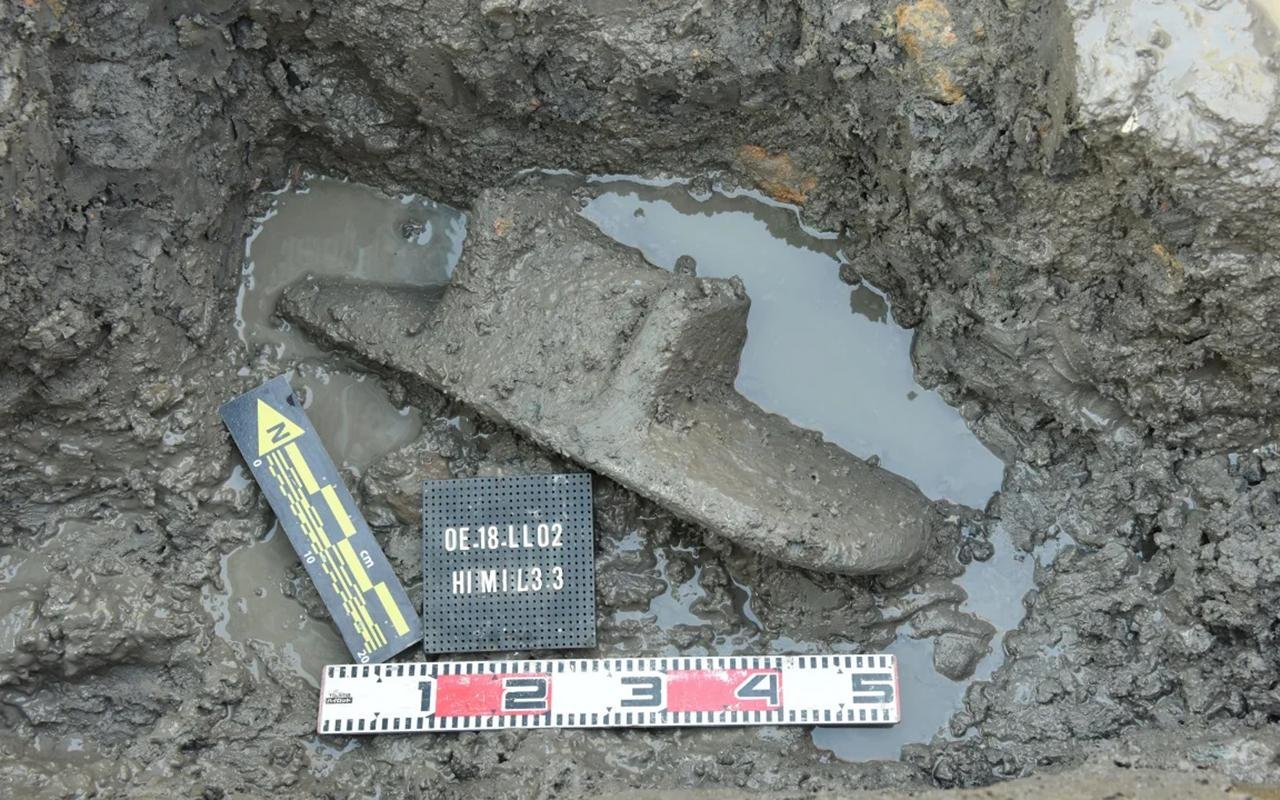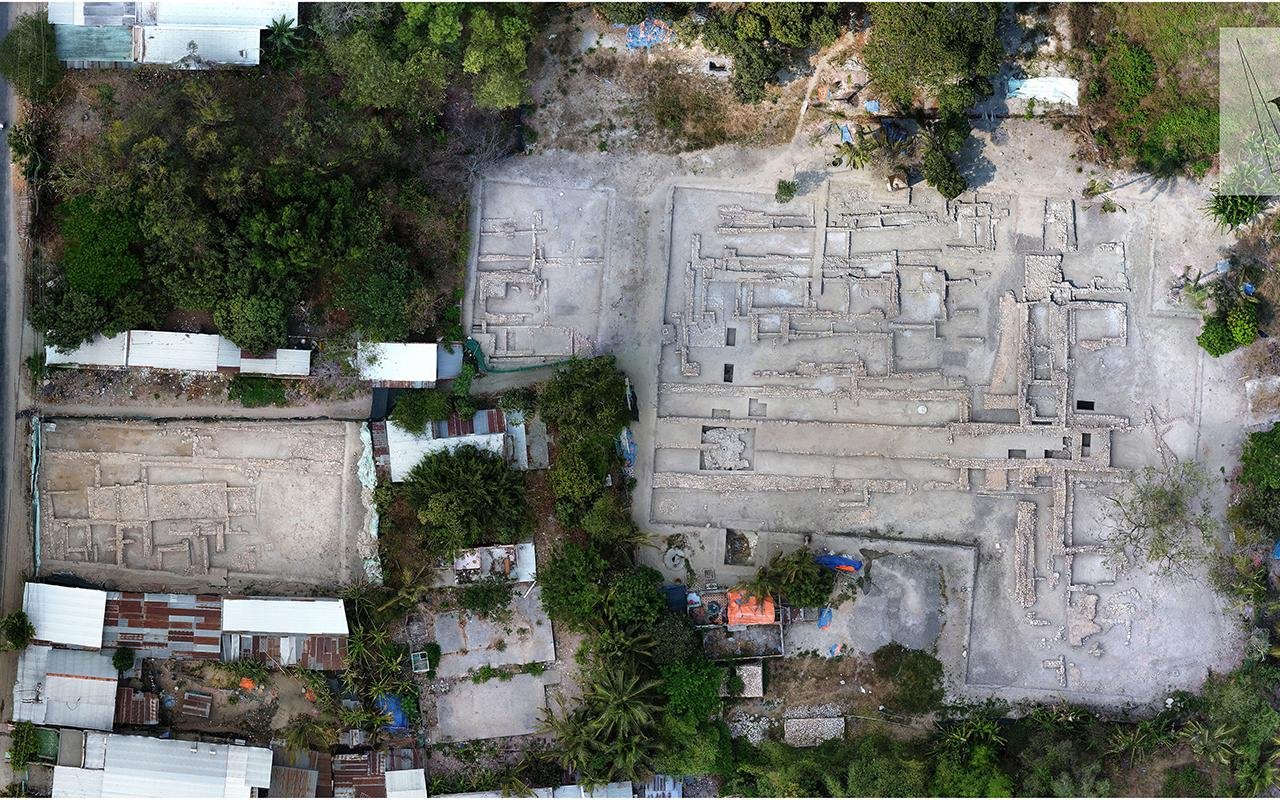Curry, the popular and flavorful dish known for its aromatic blend of spices, has a history in Southeast Asia that dates back at least 2,000 years.
 The sandstone grinding slab was found 2 meters below the surface. Credit: Khanh Trung Kien Nguyen
The sandstone grinding slab was found 2 meters below the surface. Credit: Khanh Trung Kien Nguyen
Traces of spices found on stone tools in Vietnam provide evidence of the early preparation of curry in the region. The discovery was made at the Oc Eo archaeological complex, once a prominent trading hub of the ancient Southeast Asian kingdom known as Funan.
A sandstone slab, buried 2 meters below the surface, was discovered in 2018 at the Oc Eo site. Researchers, led by Dr. Hsiao-chun Hung from the Australian National University, examined microscopic starch grains found on the grinding and pounding tools.
The analysis revealed a variety of spices, including turmeric, ginger, fingerroot, sand ginger, galangal, clove, nutmeg, and cinnamon, all of which are common ingredients in curries today.
 Aerial view of brick foundations at Go Sau Thuan. Credit: Khanh Trung Kien Nguyen
Aerial view of brick foundations at Go Sau Thuan. Credit: Khanh Trung Kien Nguyen
According to Dr. Hung, the finding suggests that individuals living in the region at that time, even outside of India, had a strong desire to savor the flavors of curry and went to great lengths to prepare it.
The discovery sheds light on the migration of curry and its ingredients to Southeast Asia, likely brought by South Asian traders and migrants during early trade contact via the Indian Ocean.
The researchers also found nutmeg seeds that, remarkably, still emitted a unique aroma after two millennia.
This spice remains reveal that the stone mortars, pestles, and grinding slabs found at the site were likely used for food preparation, including the creation of curry dishes.
Although curry’s origin can be traced back to India over 4,000 years ago, the recent findings from Vietnam show that the dish’s production has a rich history beyond the Indian subcontinent. Some of the ingredients found at Oc Eo, like turmeric, resemble those used in Indian curries, while others, such as coconut milk and galangal, are more distinctly Southeast Asian.
The site of Oc Eo, a major port city in the ancient Funan kingdom, has long been considered a crossroads of extensive trade networks.
The maritime trade route that connected the Mediterranean Sea to China and Southeast Asia played a vital role in the movement of spices and culinary traditions.
The research not only confirms that spices were traded commodities in global maritime networks nearly 2,000 years ago but also highlights the significance of food culture in human history.
The study’s authors hope to recreate the 2,000-year-old curry using the ingredients found at the site, offering a glimpse into the culinary practices of the ancient inhabitants of Oc Eo.
The findings, published in the journal Science Advances, provide valuable insights into the early adoption and dissemination of spices and culinary practices, revealing how the flavors of curry have traveled across time and borders.
More information: Weiwei Wang et al. (2023). Earliest curry in Southeast Asia and the global spice trade 2000 years ago. Sci. Adv. 9, eadh5517. DOI:10.1126/sciadv.adh5517





